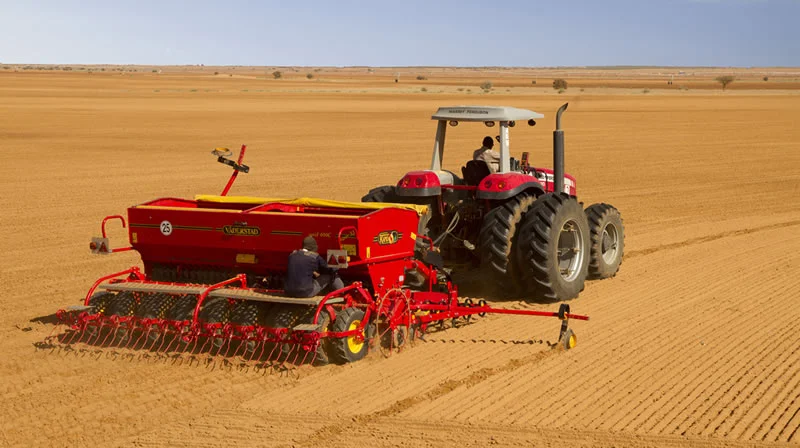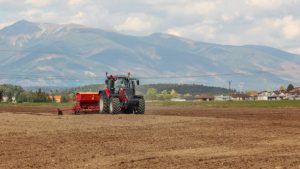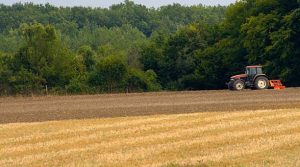In the vast landscape of agriculture, innovation has been the driving force behind increased efficiency and productivity. One such innovation that has played a crucial role in shaping modern farming practices is the seed drill. This article delves into the purpose of seed drills, exploring their historical evolution, core functionalities, types, benefits, and future trends that continue to revolutionize precision agriculture.
Evolution of Seed Drills
Early Manual Seed Drills
The journey of seed drills began with early manual devices that required significant labor and time. These rudimentary tools marked the initial steps toward mechanized planting.
Mechanical Advancements
Mechanical advancements in the agricultural sector led to the development of more sophisticated seed drills. These machines offered increased efficiency, making it easier for farmers to cover larger areas for planting.
Modern Automated Seed Drills
The pinnacle of seed drill evolution lies in modern automated versions. These advanced machines not only streamline the planting process but also incorporate smart technologies for precise seed distribution.
The Core Purpose
Precision Planting and Seed Distribution
At its core, the purpose of a seed drill is to facilitate precision planting. Unlike traditional methods that involve broadcasting seeds, seed drills ensure uniform distribution at predetermined intervals. This precision optimizes the use of space and resources, ultimately contributing to higher crop yields.
Increased Efficiency in Sowing
Seed drills significantly enhance the efficiency of sowing. By automating the seeding process, farmers can cover more ground in less time. This not only increases productivity but also reduces the labor required for manual planting.
Conservation of Resources Through Optimized Planting
Efficient use of resources is a key aspect of the seed drill’s purpose. By avoiding over-seeding and optimizing the spacing between seeds, these machines reduce seed wastage. This, in turn, promotes sustainable agricultural practices and ensures the conservation of valuable resources.
Types of Seed Drills
Traditional Seed Drills
The earliest versions of seed drills were simple and relied on mechanical components. While basic, these tools paved the way for the advancements that would follow.
No-till Seed Drills
A groundbreaking concept in modern agriculture, no-till seed drills allow farmers to plant without disturbing the soil. This innovation minimizes erosion, preserves soil structure, and promotes overall soil health.
Air Seed Drills
Utilizing air pressure, air seed drills provide a controlled and uniform distribution of seeds. This method ensures optimal planting conditions and contributes to the precision planting goals of modern agriculture.
Benefits Derived from the Purpose
Improved Crop Yield
One of the most significant benefits of using seed drills is the improvement in crop yield. The precision in planting leads to healthier and more robust crops, translating to economic benefits for farmers.
Soil Conservation and Health
Especially with the adoption of no-till seed drills, soil conservation becomes a prominent advantage. Reduced soil disturbance helps maintain soil structure, preventing erosion, and fostering a healthier environment for plant growth.
Time and Labor Efficiency for Farmers
Automation in planting translates to time and labor efficiency for farmers. Large-scale farming operations, in particular, benefit from the speed and precision offered by modern seed drills.
Factors Influencing Purposeful Use
Soil Conditions Affecting Seed Drill Performance
Different seed drills work optimally under specific soil conditions. Understanding the soil’s characteristics is crucial for successful implementation.
Suitability of Different Seed Drills for Various Crops
While seed drills are versatile, some may be better suited for specific crops. Farmers must choose a seed drill that aligns with the crops they cultivate for optimal results.
Importance of Regular Maintenance
Regular maintenance is essential to ensure the longevity and effectiveness of seed drills. Checking and servicing the equipment at regular intervals prevent breakdowns and maintain optimal functionality.
Case Studies and Real-world Examples
The real impact of seed drills can be witnessed through various case studies and real-world examples. Farmers who have embraced this technology share success stories of increased yields, improved livelihoods, and overall positive outcomes.
Challenges and Solutions
Despite the numerous advantages, seed drills may encounter challenges. Identifying common issues and implementing innovative solutions is crucial for overcoming obstacles and maximizing the benefits of these machines.
Future Trends in Seed Drill Technology
The future of seed drills involves the integration of smart technology. Innovations such as sensors, data analytics, and artificial intelligence aim to further enhance precision, sustainability, and efficiency in agriculture.
Conclusion
In conclusion, the purpose of seed drills extends beyond mere planting—it symbolizes a revolution in agriculture. From historical significance to future trends, seed drills continue to shape the landscape of farming practices, fostering efficiency, sustainability, and prosperity for farmers worldwide.
Frequently Asked Questions (FAQs)
- How does a seed drill work?
- Seed drills use various mechanisms to precisely place seeds at predetermined intervals, optimizing planting efficiency.
- Can seed drills be used for all types of crops?
- While versatile, some seed drills may be better suited for specific crops, and farmers should choose accordingly.
- What environmental benefits do seed drills offer?
- Yes, particularly with no-till seed drills, as they contribute to soil conservation and reduce the environmental impact of farming.
- What maintenance is required for a seed drill?
- Regular checks and servicing are necessary to ensure optimal performance and longevity of seed drills.
- How can farmers access modern seed drill technology?
- Farmers can explore various avenues, including agricultural equipment suppliers, government initiatives, and technology-driven agriculture programs.




